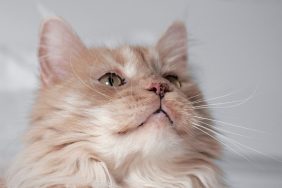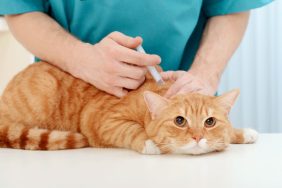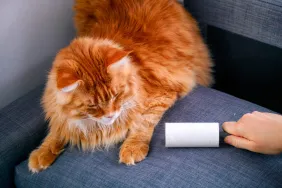
This article courtesy of PetMD.com.
Alopecia
Hair loss (alopecia) is a common problem for cats. The hair loss can be partial or complete, and the patterns varied or symmetrical. Treatment options exist, though they are limited.
Symptoms and Types
Signs include partial or total hair loss. The skin surrounding the area of hair loss can appear normal or it can have redness, bumps, scabs, and skin loss. Alopecia may appear in a symmetrical form, or it can be random on the cat’s skin.
Causes
In older cats diagnosed with cancer, alopecia is common. Nervous disorders (e.g., over-grooming) can also cause cats to lose their hair. Hormonal imbalances, specifically too much thyroid or increased levels of steroids in the body, may lead to hair loss. Some cats experience skin allergies, which can also cause hair loss to occur. Parasites that bring about mange, and fungal issues like ringworm, are also a common cause of alopecia. Another less common factor is heredity.
Diagnosis
A complete blood count (CBC) is often done to determine if there are hormonal or thyroid imbalances causing the alopecia. Various imaging tools, such as X-rays, are used to rule out signs of cancer or abnormalities in the adrenal glands. Meanwhile, if the veterinarian believes hair loss is due to a skin issue, a skin biopsy or culture may be done.
Treatment
If the alopecia is due to a skin disorder (e.g., skin erosions), thyroid imbalance, or other hormonal imbalance, there are medications and topical treatments available. If hair loss is due to a behavioral issue, modification treatment can be taught to lessen the problem. Overall, treatment options are fairly limited.
Living and Management
Other than administering the appropriate medication, you should observe the cat’s condition to make sure it does not become worse.
Prevention
There are no surefire methods to prevent hair loss in cats.









